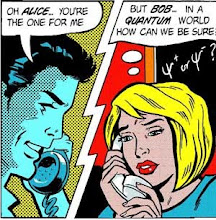How To Make A Slide Presentation
by John Cesarone, Ph.D., P.E.
Here are some practical tips for putting together a good technical slide presentation:1. First, remember that your goal is communication, and probably persuasion. We're always trying to sell something to someone, if only our ideas in exchange for their agreement.
2. All presentations should follow this generic outline: Tell them what you're going to tell them, then tell them, then tell them what you've just told them. In other words, start with a little preview, then lead into the body of the presentation, then end with a recap of what you have presented.
3. Always start with a title slide, and include your name. Most presentations turn into documents when people save, file, and distribute the hardcopies you hand out. Make sure your name is included so they know who gets the credit, and make sure the title is up front so they know what the heck the presentation is about. Including your phone number and email are a good idea, too.
4. After that, always follow up with an outline slide (remember: tell them what you're going to tell them). This creates the framework of your presentation, so that when you supply details the audience will know where they belong in the big picture.
5. It often helps to repeat the outline slide at the beginning of each major section of the presentation, with the current item highlighted.
6. Use a border around the slide; this gives it a feel of completeness, and shows that nothing is missing off the edge of the screen.
7. Have a header or footer on every slide with the name of the presentation at a minimum, preferably also your name and the date, and logos of sponsors or affiliates, etc. Page numbers are a good idea too, in case they get shuffled.
8. Electronic presentations are very popular, but hardware is still not bullet-proof. Always bring along a set of hard copies for emergencies; in the worst case, you can have them copied and handed out.
9. Better yet, plan on handing out hard copies to everyone anyway so that they can jot down notes, and take something away with them for later referral.
10. For an overhead projector presentation, a colorless background with dark lettering and figures works best. If you still use 35mm slide presentations, a dark background (like dark blue) with light lettering works best.
11. A significant fraction of the population suffers from red/green colorblindness. Make sure no essential information requires distinguishing between these colors, for example in figures or diagrams.
12. If you use multiple colors for text and figures, and your handout hard copies are black and white, make sure that you aren't losing essential information in the translation.
13. Three to six bullets per slide is a common rule. It's a good one, too, but it can be violated if necessary for specialized items like tables or charts.
14. Landscape orientation is more readable than portrait orientation, since you'll be able to get most bullets on one or two lines.
15. If you have a chart or graph in your presentation, make sure that both axes are labeled, and a title is included explaining what the chart is supposed to be. It should be sufficiently labeled to speak for itself.
16. Always include your outline slide again at or near the end of the presentation (tell then what you just told them) as a wrap-up to help put everything in context.






No comments:
Post a Comment